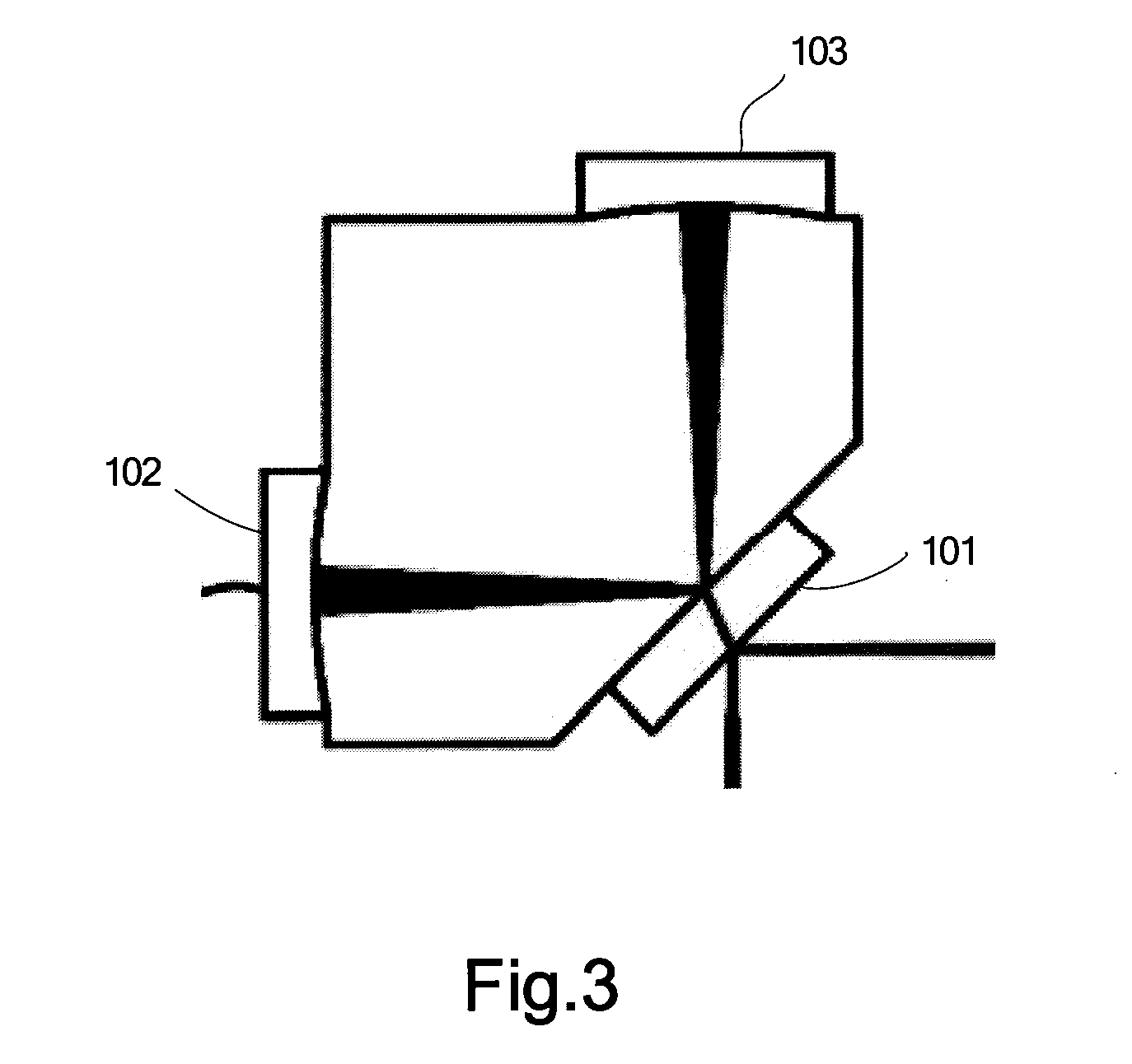Monolithic folded f-p cavity and semiconductor laser using the same
a monolithic, f-p cavity technology, applied in semiconductor lasers, instruments, optical elements, etc., can solve the problems of poor system reliability, large volume of f-p cavity, and sensitive outside inference of existing folded f-p cavities composed of discrete components, and achieve the effect of convenient fabrication
- Summary
- Abstract
- Description
- Claims
- Application Information
AI Technical Summary
Benefits of technology
Problems solved by technology
Method used
Image
Examples
first embodiment
[0035]FIG. 4 shows the structure of monolithic folded F-P cavity 5 according to this invention. According to this preferred embodiment, the monolithic optical element forming the F-P cavity is a prism with cross-section of right trapezoidal shape, which is made of monolithic material having low transmission loss for the resulted laser radiation spectrum range, such as low transmission loss quartz glass, or other optical glass (FIG. 4 shows the cross-section of the cavity, all lateral edges of the prism are vertical to that cross-section). As an example, the prism is formed in such a way that its trapezoidal cross-section has a bottom length of 15 mm and a height of 13 mm, and the length of lateral edges of the prism is 6 mm (the thickness of the monolith). Those skilled in the art will understand that the dimensions mentioned above are only illustrative, and other shapes and / or sizes are also possible for the monolithic element of the folded F-P cavity.
[0036]The side where the right...
second embodiment
[0039]FIG. 5 schematically shows the structure of the monolithic folded F-P cavity according to this invention. In FIG. 5, point C represents the position where a light is incident on a coupling surface, and points A and B represent the corresponding reflection positions of the two high reflection surfaces of monolithic optical element 5, wherein only one path folding occurs on the coupling surface within monolithic optical element 5.
[0040]In this case, a light beam enters monolithic optical element 5 at point C on the coupling surface, then, after refraction, is perpendicularly incident to point B on the first high reflection surface coated with high reflectivity coating, where it is reflected back to point C along the original path, and, after second reflection, folded towards the second high reflection surface coated with high reflectivity coating, and then perpendicularly incident to point A thereon, from which it returns back to point C along the original path, where both trans...
PUM
 Login to View More
Login to View More Abstract
Description
Claims
Application Information
 Login to View More
Login to View More - R&D
- Intellectual Property
- Life Sciences
- Materials
- Tech Scout
- Unparalleled Data Quality
- Higher Quality Content
- 60% Fewer Hallucinations
Browse by: Latest US Patents, China's latest patents, Technical Efficacy Thesaurus, Application Domain, Technology Topic, Popular Technical Reports.
© 2025 PatSnap. All rights reserved.Legal|Privacy policy|Modern Slavery Act Transparency Statement|Sitemap|About US| Contact US: help@patsnap.com



